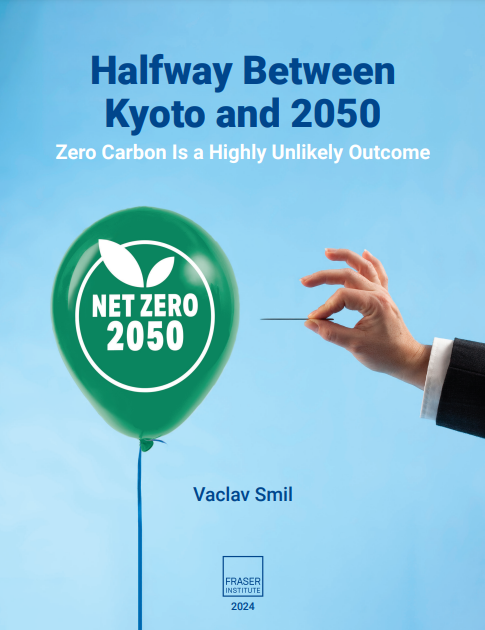
목차
Title page
Contents
Executive Summary 3
Introduction 4
1. Carbon in the Biosphere 6
2. Energy Transitions 10
3. Our Record So Far 16
4. What It Would Take to Reverse the Past Emission Trend 18
5. The Task Ahead: Zero Carbon Electricity and Hydrogen 20
6. Costs, Politics, and Demand 26
7. Realities versus Wishful Thinking 31
8. Closing Thoughts 34
References 36
About the Author 43
Acknowledgments 43
Publishing Information 44
About the Fraser Institute 45
Editorial Advisory Board 46
Figure 1. Global CO₂ Emissions from Fossil Fuel Combustion Rose 19-fold between 1900 and 2022 6
Figure 2. Average Annual CO₂ Concentrations Measured at Mauna Loa Rose by 34 Percent Between 1958 and 2023 7
Figure 3. CO₂ Emissions According to the IEA's Scenarios 8
Figure 4. The IEA's Global Turning Points Followed by a Long and Substantial Presence of Fossil Fuels in the Stated Policies Scenario 12
Figure 5. Global Dependence on Fossil Fuels Has Continued to Rise in the Twenty-first Century 16
Figure 6. Primary Green Ironmaking 22
Figure 7. The Declining Quality of Chilean Copper Resources Between 1999 and 2016 24
Figure 8. Forecast of New Airplane Deliveries between 2023 and 2042 29
해시태그
관련자료
AI 100자 요약·번역서비스
인공지능이 자동으로 요약·번역한 내용입니다.
Halfway between Kyoto and 2050 : zero carbon is a highly unlikely outcome
(교토의정서와 2050년의 중간 지점 : 탄소 제로는 가능성이 매우 낮은 결과입니다)



